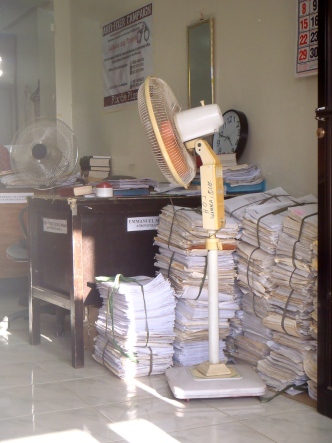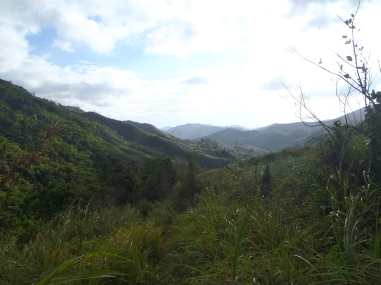“If considering to travel to Mindanao, one should exercise extreme caution.”
Those are words from a foreign country’s “Philippines Travel Warning” but even just from Metro-Manila, Mindanao – the southernmost island group of the Philippines – is often seen just as a problem-filled and undeveloped area only causing headache for the rest of the country. And to be honest, that idea can easily be backed up with certain facts. Mindanao is the poorest of the three island groups of the Philippines, and for the rest of the world, if it is known, it’s that because of kidnappings, murders, massacres, terrorists and war.
So it’s understandable that before leaving for a work trip there, I was constantly warned about its many dangers, advised to stay alert and to “exercise extreme caution”. However, when I returned from my journey to the Capital Region two weeks later, I felt like I should be the one warning others. Warning them about the prejudice that can grow within us through the stories told to us – and the stories left untold. For what I saw in Mindanao was something else than what the news told to me everyday in Metro-Manila, let alone the things I remembered hearing about it back home in the west.
What we see now is nothing but a reflection of the past
Mindanao is one of the world’s oldest crisis areas. The Spaniards tried to conquer it for more than 300 years before the American guns finally succeeded in which the Spanish didn’t. After the war, the United States united Mindanao to the rest of the island group they were now ruling next to the South China Sea – the Philippines. Later Mindanao was also internally colonialized by the government sitting in Manila, and the conflicts continue till today.
These are facts that could all be listed in the fact sheet of Mindanao. Within the human rights organizations in the Philippines, “fact sheets” refer to the pieces of papers from where one can read about who got harassed, tortured, or killed, where and when, as well as the possible reasons why. In other words, these sheets summarize the brutal facts of the tragedies that have happened – and are going on – in the country.
Yes, the facts mentioned above could comprise the “fact sheet” of an island group, and of a whole country. However, when I came back to the north – first to the north of the Philippines, and then to the north of our globe – I felt like that kind of story wouldn’t tell anything about what I saw in the south. I felt I saw something much more.
A fact sheet
My first meeting in Mindanao was in a small town right in the center of the island, where I met the family of Teresito Labastilla. Here’s a summarized fact sheet of an incident that took place four months ago:
Teresito Mula Labastilla, 46 years old
At Dionisio Micayabas Street, North Poblacion, Maramag, Bukidnon on the morning of 12th of February 2015, Teresito Mula Labastilla, also known as Fr. Sito, dropped his son at school. While Labastilla was about to leave the school premise unknown assailants on a motorcycle peppered him with bullets. His son, who just got down from the vehicle a minute before, heard a series of gun shots and his father calling him. On arrival to the hospital, Teresito was found dead.
“Sito” was a former priest, human rights defender of indigenous people and farmers, and a well-known environmental activist in the whole province of Bukidnon. He served as a priest for 14 years until 2000, when he decided to go out of the priesthood and have his own family. In 2010, he ran for mayor in Lantapan, Bukidnon and his main advocacy was for the issues of land and water to be resolved for the farmers and indigenous people in his area.
He didn’t win the election, but that didn’t stop him to work for his advocacy by advising and helping the indigenous people and farmers in fighting for what was theirs legally, and morally.
This moment is all we ever get – luckily, a lifetime of wondering won’t be enough to discover all the beauty in it
A woman looks at me, smiles, gives a warm two-handed handshake and invites me in to her carinderia (a Filipino style eatery). Now as the sole breadwinner of the family she is busy taking care of two small businesses – the carinderia and a sari-sari store (a tiny convenience store) next to it. She runs the stores, but she can’t run – because of an illness she needs to have braces on her feet which makes even walking sometimes a challenge for her.
As we sit down opposite to each other, her 10-year-old twin daughters and her 12-year-old son are all laughing and fooling around in the background – enjoying their summer break from school. Once in a while, one of the kids serves customers dropping by, letting their mom concentrate on our conversation. She shares me her story and the story of her family, she tells me about the misfortunes and about the blessings, she laughs and she cries – she hides nothing from me. Despite everything, right at that moment I feel like I’m in a happy place, among a happy family.
She tells me how the father of the her children committed his life to help the less unfortunate ones and fought for what he felt was right. “Doing the right thing” meant fighting against the corrupt officials and the influential families of the area – it meant fighting against the system. “Fighting” in Sito’s case meant nothing else than helping the people in need. What Sito lived for, became what he died for.
After we said our goodbyes, I no longer felt pity, but a great respect for the whole family of Labastilla that I had had an honor to meet – Sito had been present there too, the woman told me.
When we get used to the darkness, it’s difficult to open our eyes for the light
The fact sheet of Labastilla case could tell us just about another tragedy in a reality where the good guy loses in the end and how there is no happy ending. But it can also tell us a story of how even during the darkest times, there’s beams of light that can bring a smile to our faces if we just keep our eyes open.
With the example set to me by the people like the Labastillas, my eyes were opened to another kind of reality that lied behind all the suffering and oppression – behind those facts that can compose the fact sheet of the family of Labastilla, or the island group of Mindanao. That reality is something too beautiful ever to capture on any paper, not to mention on a “fact sheet”.
“Write poems, not CVs”
What if.
What if we tear the fact sheets of our life in shreds, and start concentrating on our own true story behind – that story of which reflection we are today. What if we let that story be the one we let others to hear, and let that story be the one that we are willing to hear about them too. The story of a drunkard sitting on a park bench, the story of a businessman with a well-trained handshake, the story of the people from a developed country, and the story of the people from an undeveloped one.
Let us not “exercise caution” at all, and maybe then we are open to the fact about this world that we know even with our eyes shut – we’re all in this together.

















